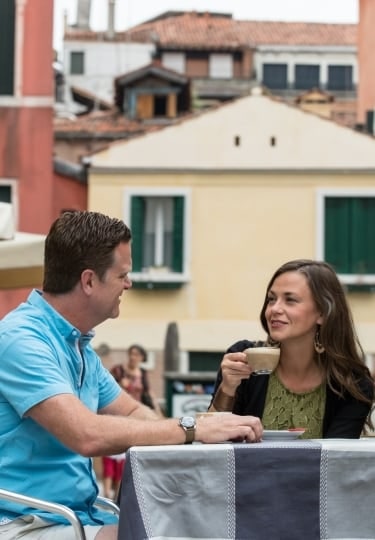How to order coffee in Italy is something that every visitor to this foodie nation should understand, even if you have more of a penchant for tea.
Traditions run deep in Italy and few are as universally observed as espresso. Italians begin their day with coffee and often finish their day with a post-dinner espresso. Neighborhood coffee bars see an influx of locals from all social strata, rubbing shoulders and opining on the latest hot topic over an invigorating shot of inky brown Joe—or should that be “Giuseppe?”
Ordering coffee in Italy is one of the easiest ways to slip beneath the skin of this warm and welcoming country. However, be sure to glean the tips from this guide so that your entry into Italian culture is as smooth and effortless as a sip of cappuccino.
History & Culture
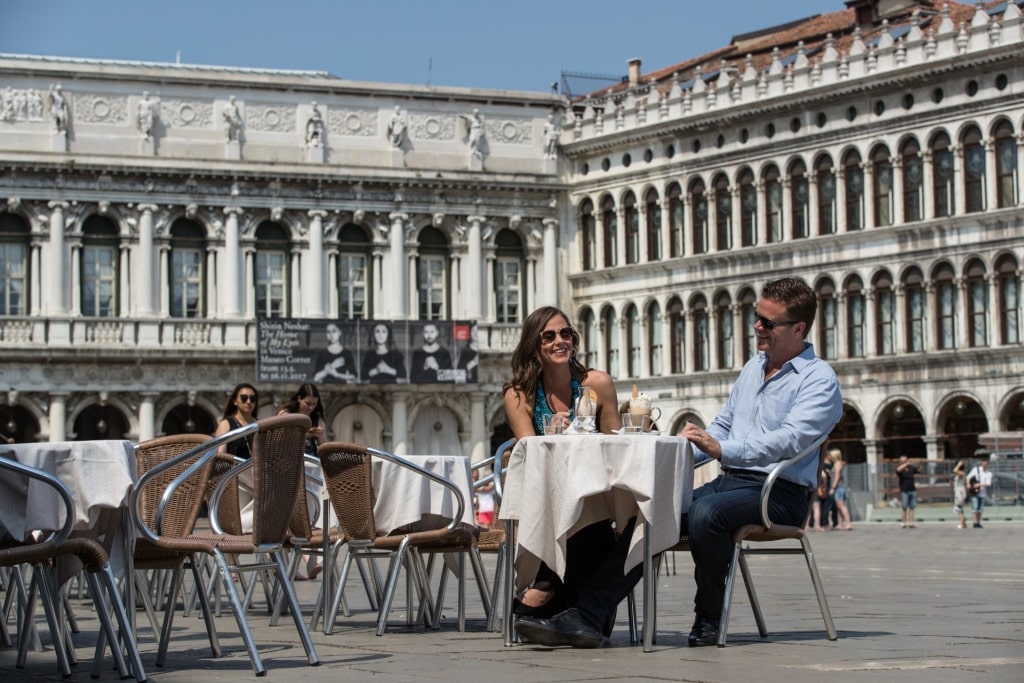
Venice
Coffee has ingrained itself into Italian culture over nearly 500 years. It first arrived in the bustling markets of 16th-century Venice from Ethiopia. At the time, however, coffee was associated with those early adopter heathen taste-makers, the Ottomans. Therefore its arrival in Christian Italy caused something of a furore.
Happily, the pope at the time—Clement VIII—was of the “don’t knock it until you’ve tried it” variety of ecclesiastical leaders. He sipped, he sighed, he claimed to be captivated by its aromas and flavor. With that papal decree, the stage was set for a new national obsession to take hold.
By the late 17th century, the green shoots of Europe’s café culture were taking root, and Italy was no wallflower. Coffeehouses sprang up throughout Italy’s cities and this bitter, chocolatey nootropic helped fuel intellectual debate over marble coffee tables on edgy topics such as art and politics.
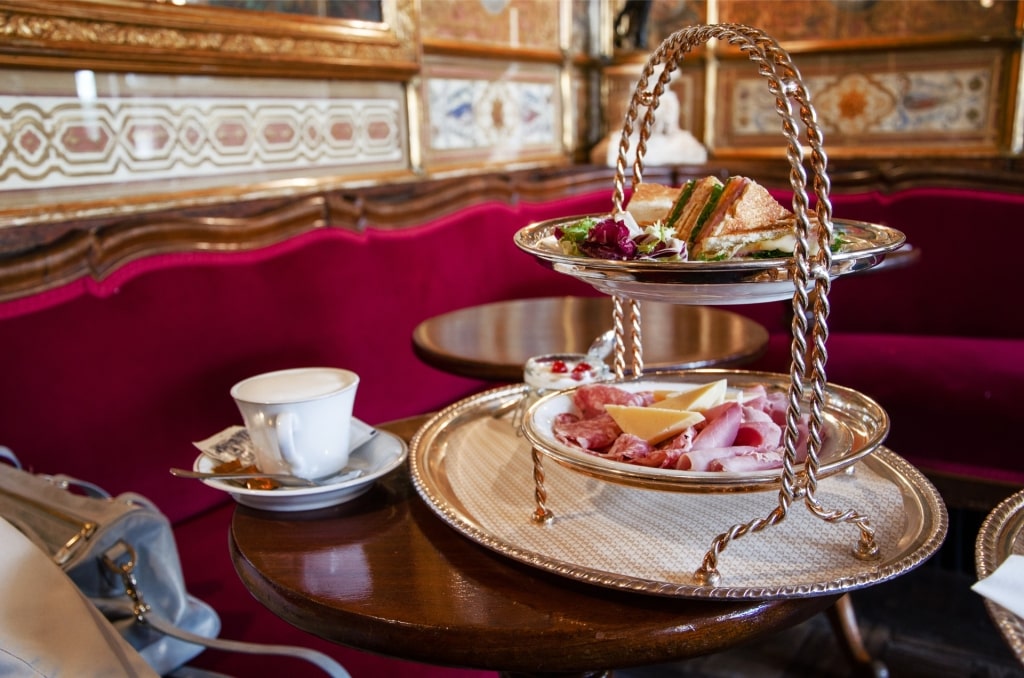
Caffè Florian, Venice
Venice’s Caffè Florian is a fine example of the kind of deluxe operation that was coming into existence. One of the first to be founded, it remains Italy’s oldest coffee house in continuous operation.
When in La Serenissima, it’s a must to perch on its historic red velvet banquettes—once frequented by Casanova and Goethe—and to be served by the white-jacketed waiters.
That Caffè Florian broke with tradition and admitted women must have been a bonus for Casanova. A significant social development in this new caffeine scene was how those from different classes mingled in these new, aroma-rich spaces.
In 1884, inventor Angelo Moriondo was responsible for the next great leap in a nation’s caffeine addiction when he patented the first steam-driven espresso machine.
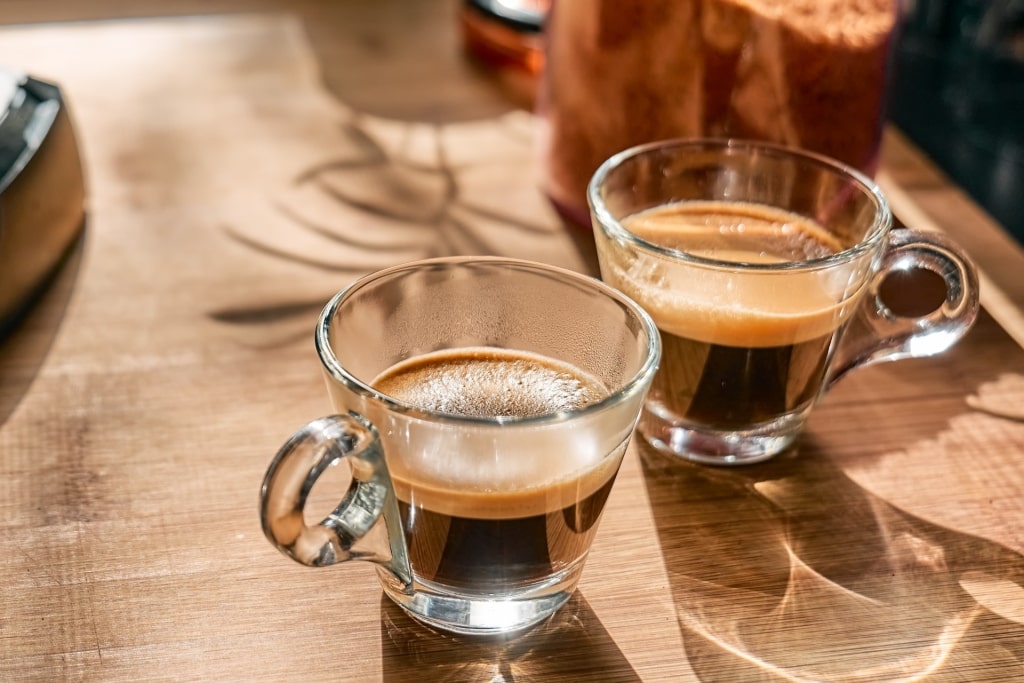
Espresso
This 19th-century innovation delivered a concentrated coffee shot and paved the way for a gear shift from coffee as a leisure activity to espresso as a chemical necessity. In its wake were established the quick-fix espresso bars so beloved of the Italian people, with debate still key to the ritual, if conducted now in somewhat less depth.
While the world of hot drinks continues to evolve and innovate, the Italian peninsula robustly resists change. A style of consumption has been found that perfectly suits the Italian way of life, and they’re in no hurry to upset the apple cart.
If this might appear rigid to outsiders, the good news is that when approaching the essential question of how to order coffee in Italy, the traditions and methods, from Piedmont to Puglia, are happily homogenous.
Common Types of Italian Coffee Drinks
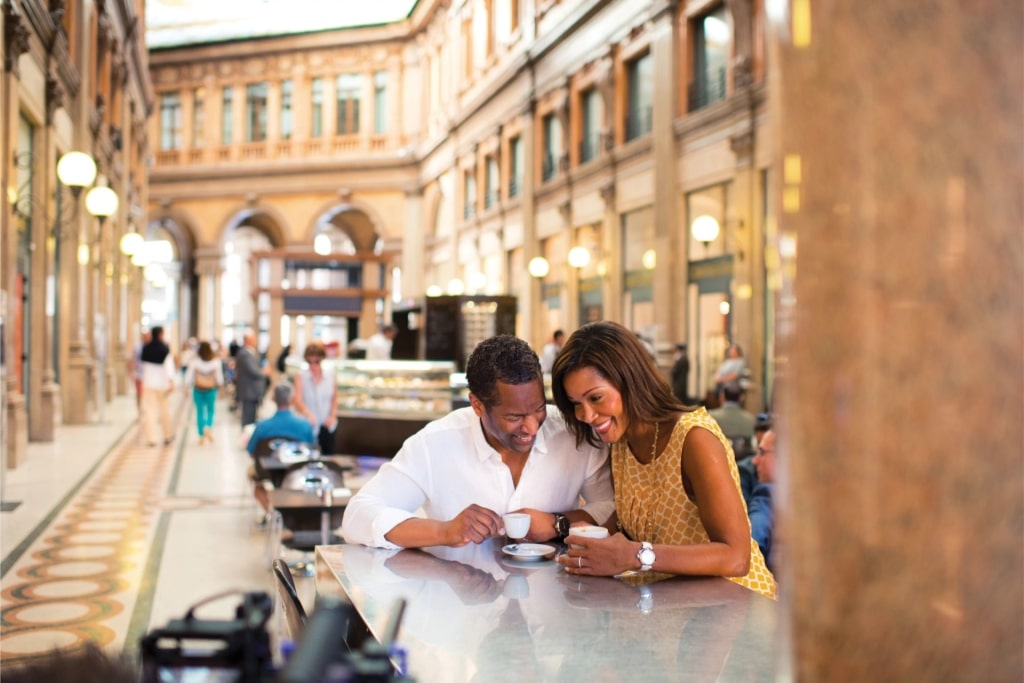
Rome
With such a traditional approach, the matter of how to order coffee in Italy is quite straightforward. Unlike the seemingly endless variables available to coffee drinkers walking into major Western chains, coffee menus in Italy are relatively straight shooters.
Here are the options you will encounter:
Caffè
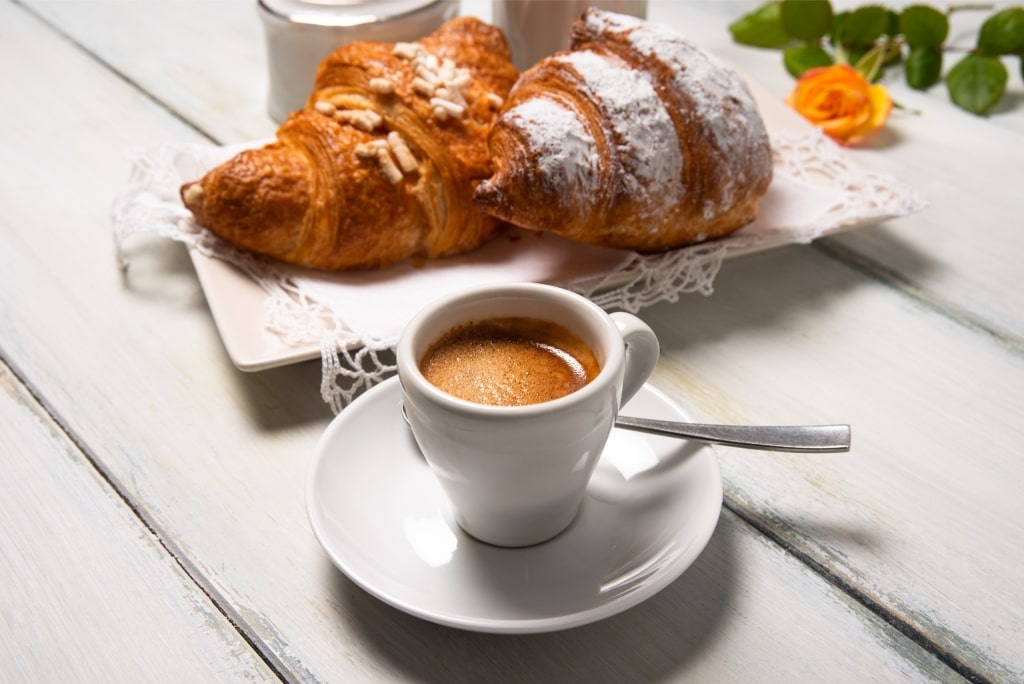
Caffè
The caffè is an espresso shot that comes in a miniature cup with a pinchable handle. It’s an almost medicinal dose, designed for swift imbibing. The roast is typically intense, and bold, with smoky, chocolatey notes. There’ll be sugar packets on your tiny saucer if you want to take the edge off of that unflinching bitterness.
If, however, you’d like to up the ante with a double shot, ask simply for a “doppio.”
Ristretto

Ristretto
This is what you order if your caffè isn’t quite punchy enough. A ristretto is simply a more concentrated shot of espresso, barely enough to wet your lips but certainly enough to send your pulse—and political opinions—racing.
Caffè Macchiato
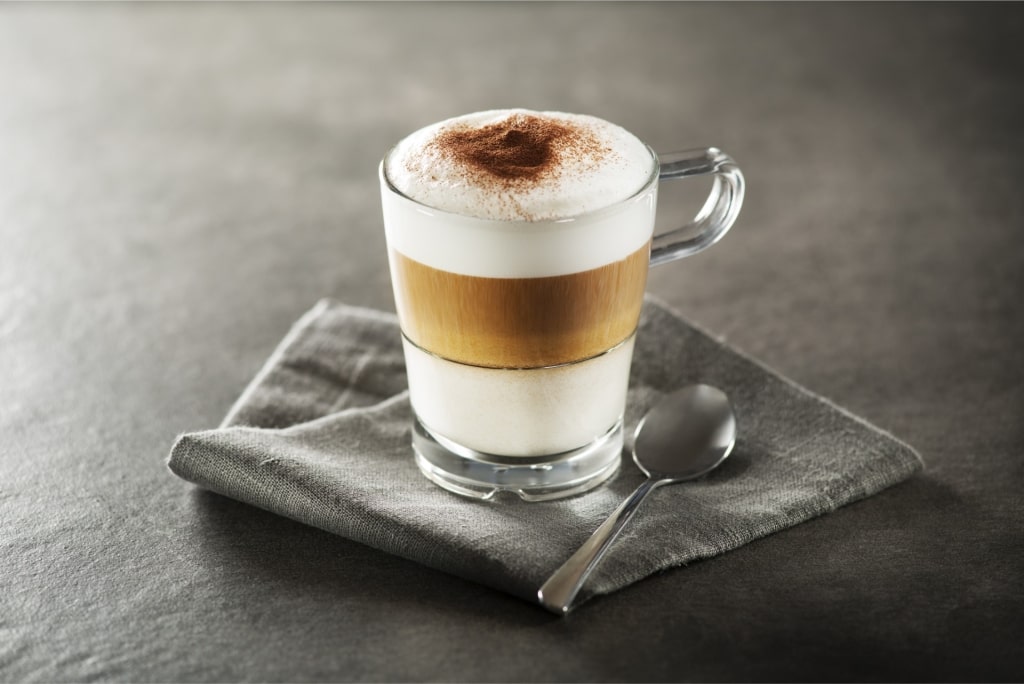
Caffè macchiato
The name bestowed upon this particular Italian coffee creation feels like a piece of cultural insight. Macchiato translates as “stain” in Italian as if you are staining the purity of your espresso with the addition of milk.
For that is all that the caffè macchiato is: an espresso served with a smidgen of milk that just softens the edges of the espresso, making it more palatable to those coffee drinkers who enjoy milk-heavy options such as the Australian flat white or the Spanish cortado.
Cappuccino
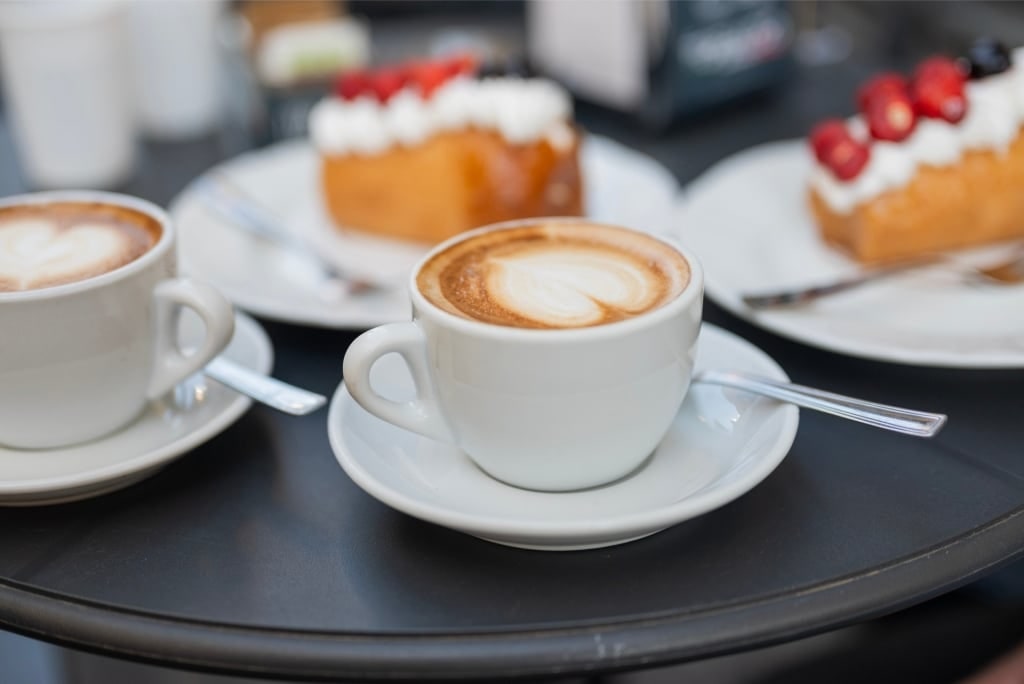
Cappuccino
How to order coffee in Italy that comes with plenty of milk? Ask for a cappuccino. The antithesis of the flinty, raw espresso, the cappuccino is a cloud of foam and warm milk from which the mellow flavors of the milk-infused espresso emerge with each glorious sip. It’s the typical breakfast option in Italy—around six ounces of porcelain-bound comfort sipping.
If you want to blend in, try not to order cappuccino after midday. Italians have several interesting, nationally held beliefs about what should be ingested at certain times of the day. Most consider drinking milk in the afternoon as a one-way ticket to an upset gut. If you must have a milky coffee after lunch, order a caffè macchiato.
Italians tend to swiftly dispatch their morning coffee, even with a longer drink like a cappuccino. How to order coffee in Italy that stays warm while you’re browsing the breakfast menu? Ask for a “cappuccino ben caldo.” This translates as an “extra hot cappuccino.”
Marocchino
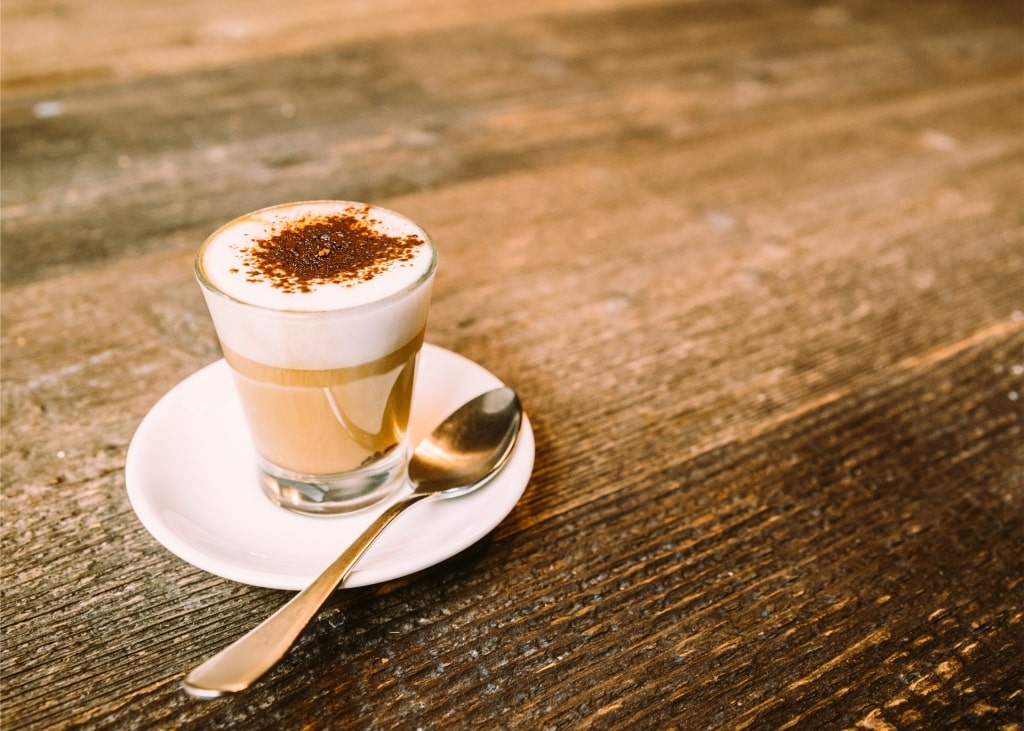
Marocchino
A kind of entry-level cappuccino, the marocchino is what you order in Italy if you’re an Italian teen just finding their way into the world of coffee, or if you’re someone with a sweet tooth.
Smaller than a cappuccino, the marocchino glass is dusted with cocoa powder before the coffee is added. This is followed by heavenly light foam and an extra sprinkle of chocolate on top.
Caffèlatte

Caffèlatte
Made with one-third espresso and the rest of the glass filled with warm milk (and a hint of foam on the top), this is one of the most well-known Italian coffees outside of Italy. Again, like its foamy brother the cappuccino, the caffèlatte is typically a morning drink.
Americano
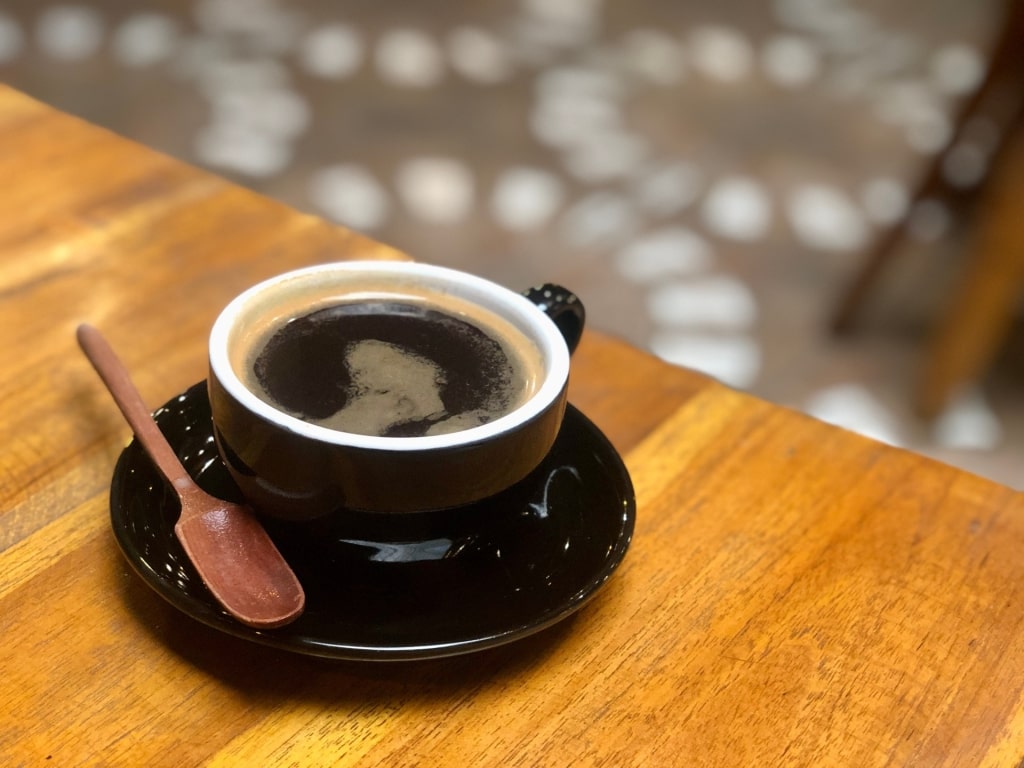
Americano
The Italian cousin of the drip coffee. The Americano is a shot of espresso served with a small jug of hot water that allows you to create exactly the amount of water-to-coffee ratio that you desire. You’ll rarely, if ever, hear an Italian order an Americano.
Although these coffee types are the ones you’ll most commonly encounter, there will be some variance. This is unlikely if you’re visiting some glorious backwater where the social rhythms are as unchanging as the craters on the moon.
However, if you’re in a cosmopolitan city such as Rome, then you may be able to find a more daring coffee menu in a hipster coffee house in a neighborhood like Trastevere.
How to Order Like a Local
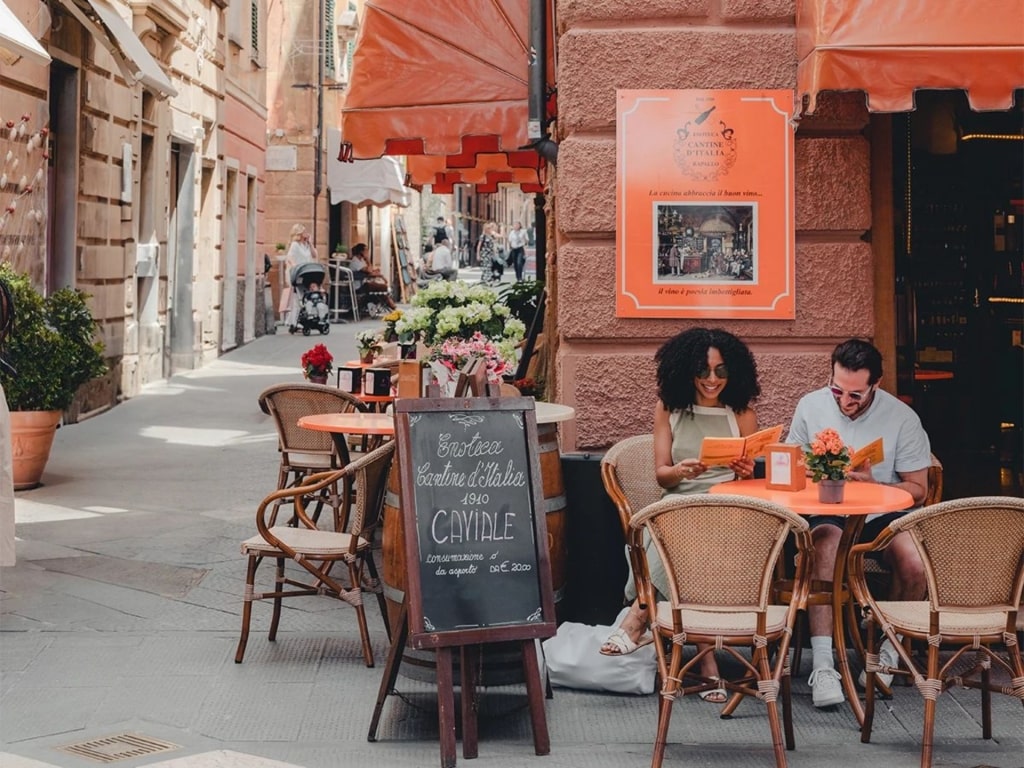
Portofino
At a bar or a cafe, you can usually drink your coffee in two ways: al banco or alla tavola. The former al banco means that you’ll remain standing at the bar. This option is the one that plants you most dynamically within the ritual of Italian coffee, as the regulars arrive on either side, mingle, and swiftly converse before bidding the barista, “ciao,” and heading to work.
The phrase “alla tavola,” on the other hand, simply means table service. Find a table inside or out, and wait to have your order taken. Be aware that some bars will charge extra for sitting at a table, and then more on top for sitting outside.
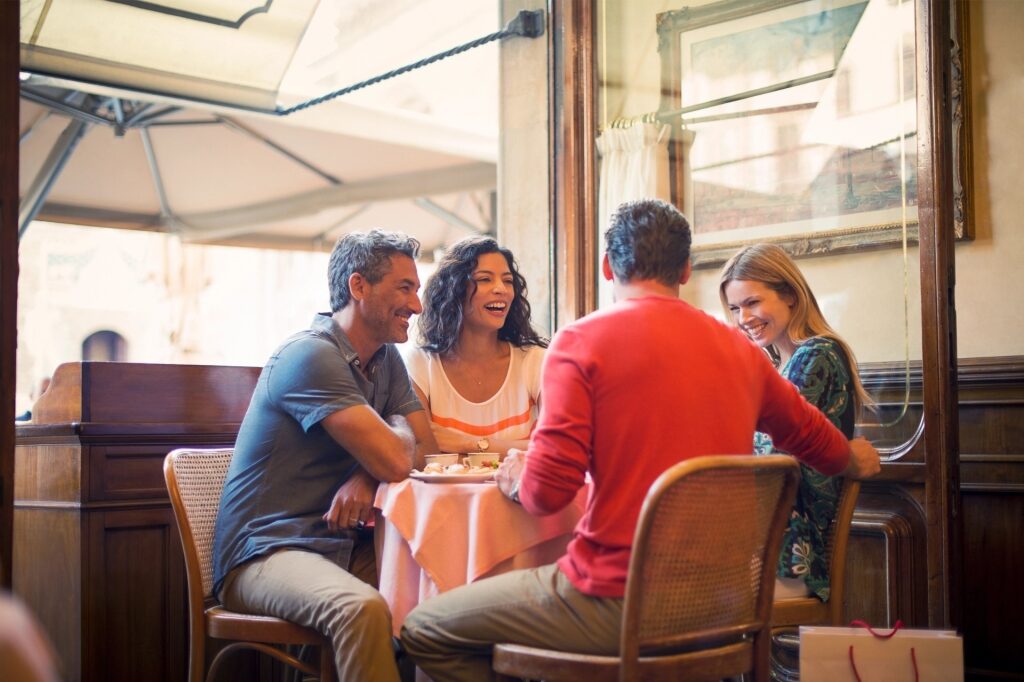
Florence
How to order coffee in Italy is, typically, a matter of verbal brevity. If al banco, walk up to the bar, wait to catch the barista’s eye, and ask, “Un caffè, grazie.” If it’s morning and you’d like something frothier, just add in “Uno cappuccino” with a “grazie” or a “per favore.” Once you’ve been served, follow up with a “grazie mille.”
A glass of water is typically served alongside the coffee. This is intended to cleanse the palate ahead of sipping your espresso.
The bill—il conto—is usually left on the bar while you enjoy your coffee. It’s best to carry a few euros to cover the bill, although the use of card machines is prevalent in larger cities.
Read: Best Food in Italy
Where to Get the Best Coffee in Italy
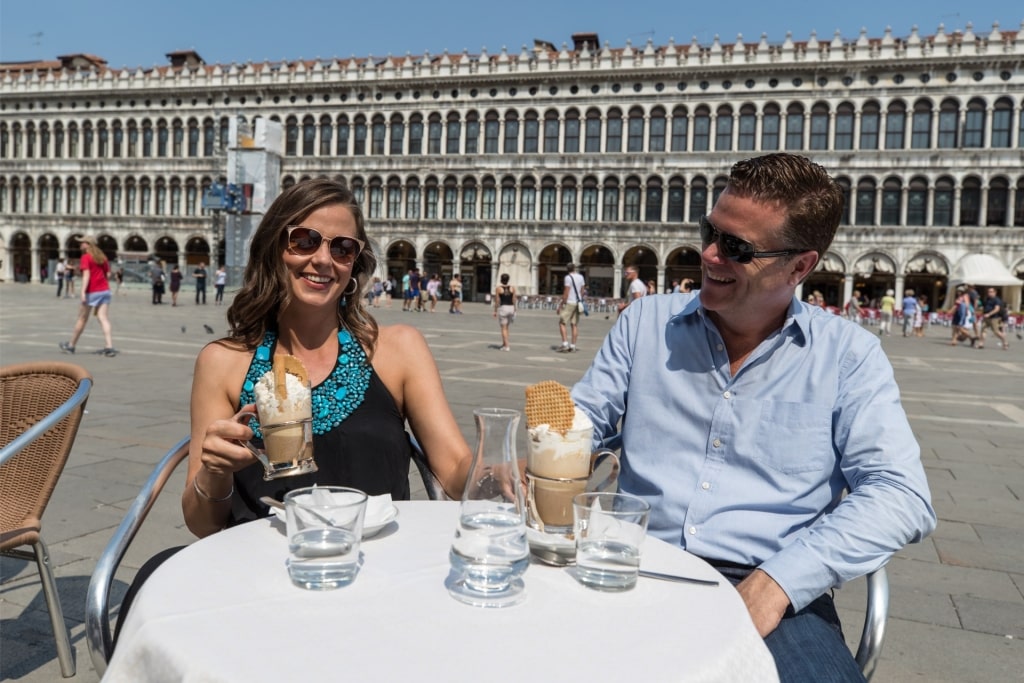
Venice
How to order coffee in Italy is only a useful skill if you know where coffee is served. Fortunately, that is pretty much everywhere you turn here.
The most common espresso dispensaries are local bars or caffètteria. Look for a sign saying, “Bar,” or spot a chalkboard advertising il caffè on the sidewalk. These establishments are part of the patina of most Italian neighborhoods and the baristas are well known to the locals.
Stroll up to the bar, catch the barista’s eye, and, once you’ve placed your order, prepare for a friendly chat with a curious local.
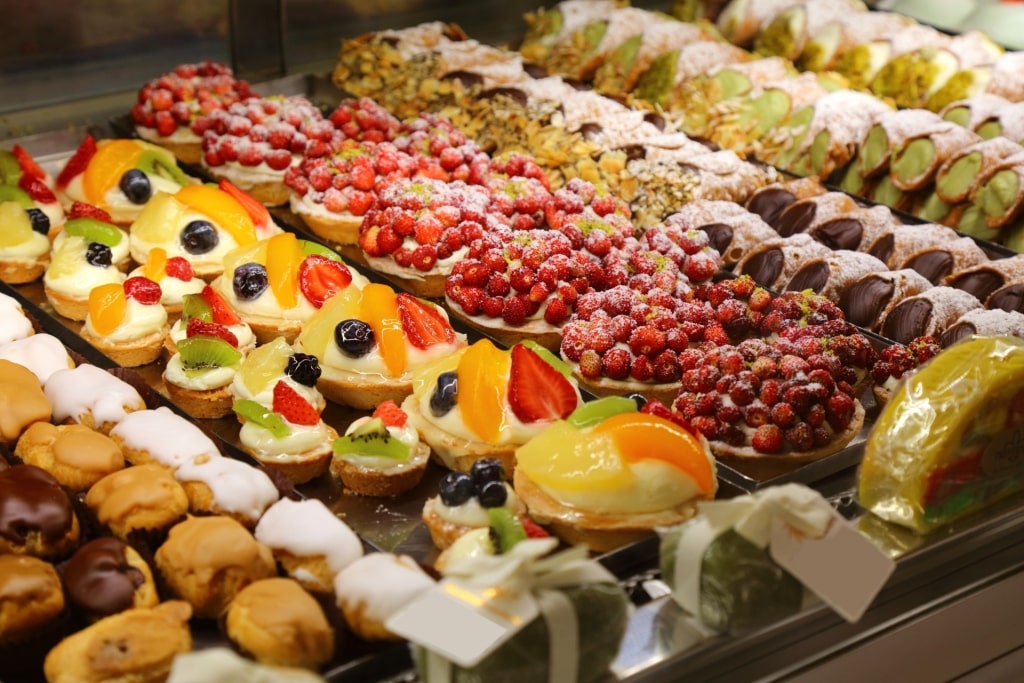
Pasticceria
Or get your fix at a pasticceria. These pastry shops operate in a similar way to the bars, except with the addition of capacious glass cases displaying Nutella-filled, butter-rich options for a delicious break from your overnight oats ritual.
While you can get excellent coffee pretty much anywhere in Italy, some establishments are particularly worth seeking out. If you’re close to the Pantheon in Rome, try the exceptional cappuccino in the Caffè Tazza d’Oro.
Or for somewhere that represents the new front in Italian coffee culture, find the excellent Pergamino near the Vatican with its nitro tap and green coffee infusions.

Gran Caffè Gambrinus Photo by Bex Walton on Flickr, licensed under CC BY 2.0
If you’re in Naples, a visit to the refined Gran Caffè Gambrinus is a must—an elegant piece of the city’s coffee culture adjacent to Piazza del Plebiscito.
As is typical with this idiosyncratic city, Naples has a distinctive take on coffee. You’ll see its cuccuma coffee pot while visiting the city, a piece of brewing history that can trace its roots back to before the advent of the famous stovetop moka.
Italian Coffee FAQs
What coffee do they drink in Italy, and at what times?
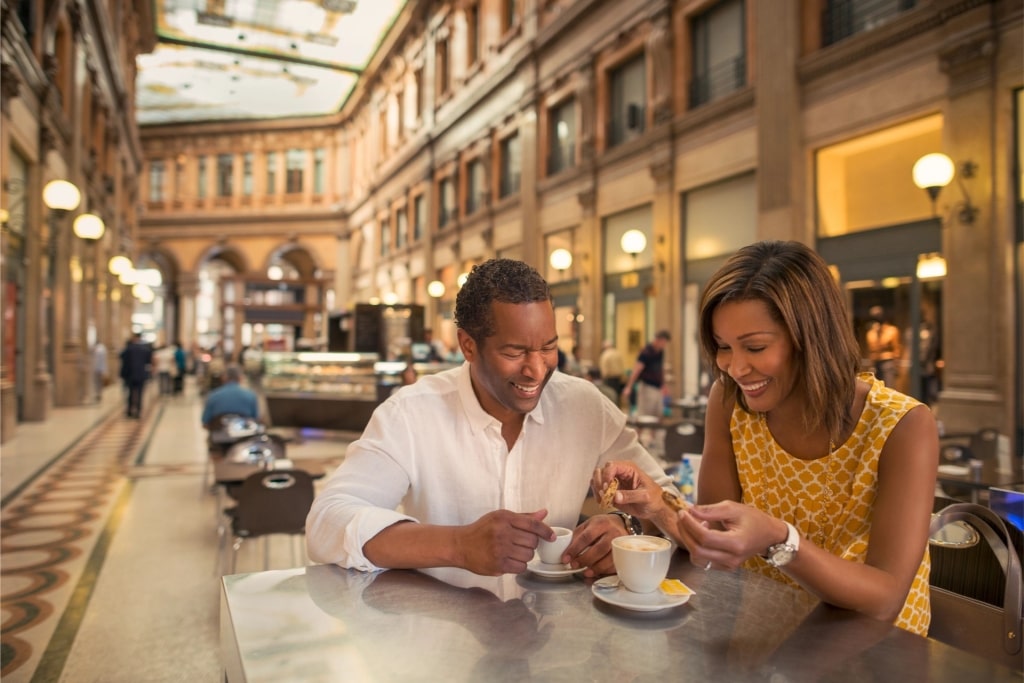
Rome
Italians are always drinking espresso, from dawn until dusk and sometimes even later. However, in the morning, you’ll also find a certain amount of cappuccini and caffèlatte in evidence at the bar, next to a pastry on a napkin.
How much should an espresso cost?
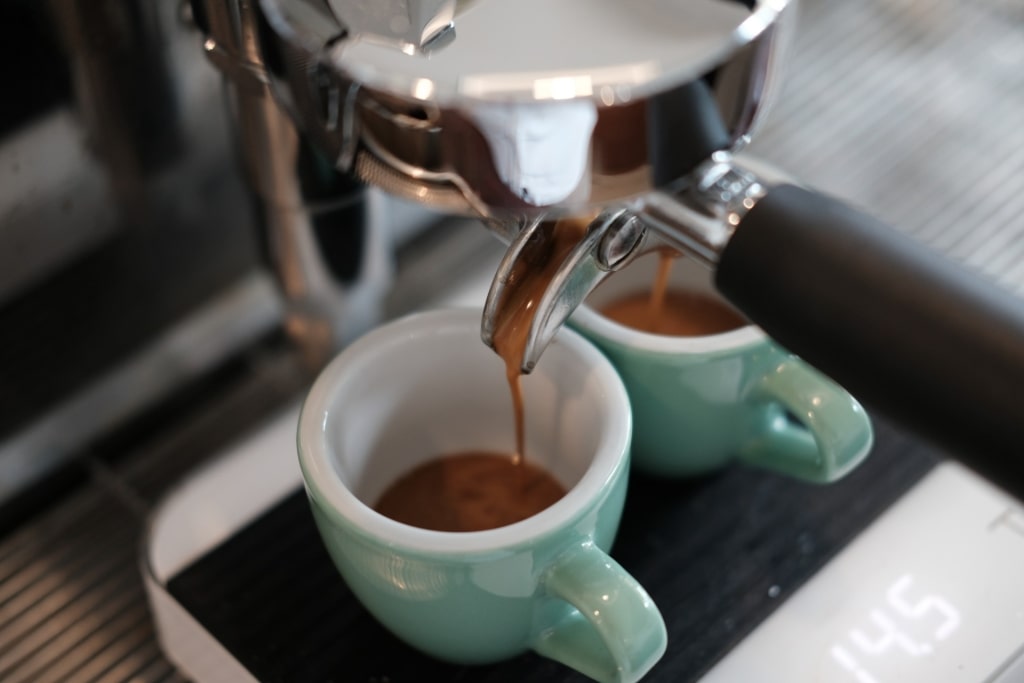
Espresso
With coffee holding such an esteemed place in daily life in Italy, you’ll find that un caffè will typically come in close to €1, with longer drinks like cappuccini and caffèlattes commanding an extra half a euro or more. If you’re in a particularly touristy area, you might find that the price rises to €2.
Is tipping required?
Typically, tipping in Italy is not required when you’re buying coffee. It’s important to remember that being a barista in Italy is a career choice, rather than a way to earn some extra money as a student. However, if you’re paying with cash, it’s fine to leave behind the change from a few euros for the barista.
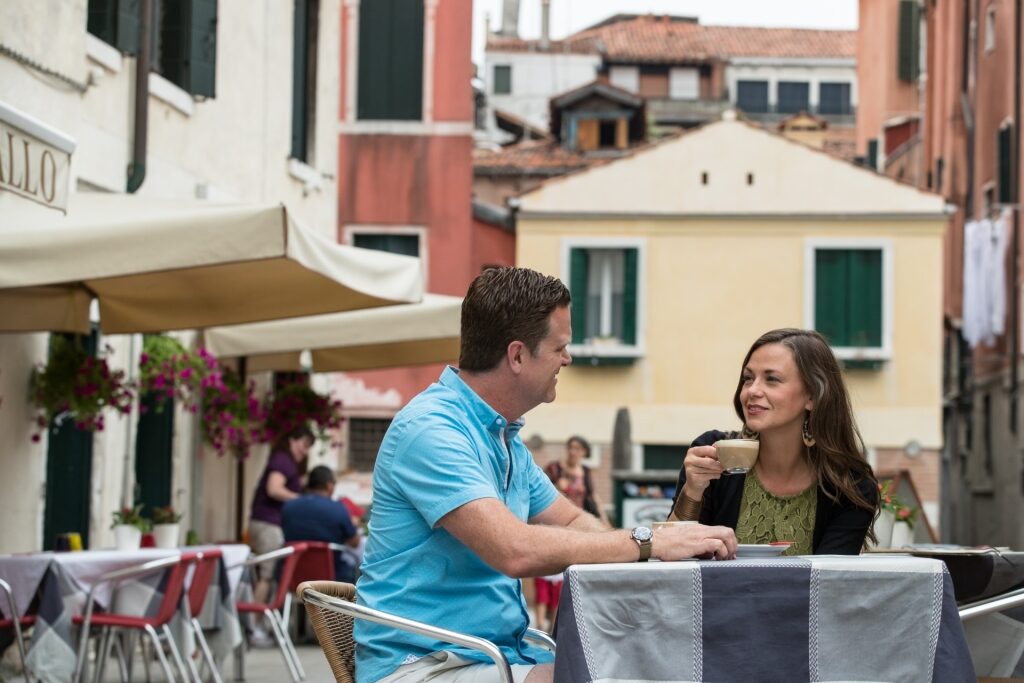
Venice
Taste some of the world’s best coffee for yourself. Browse Celebrity’s cruises to Italy and plan your vacation to this beautiful country.
